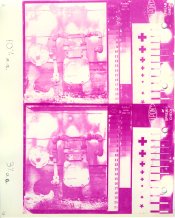holmburgers
Member
holmburgers submitted a new resource:
(there was a url link here which no longer exists) - Color Dye-Transfer Prints for the Modern Hobbyist - *Imbibition for For the People!*
(there was a url link here which no longer exists)
(there was a url link here which no longer exists) - Color Dye-Transfer Prints for the Modern Hobbyist - *Imbibition for For the People!*
HISTORY of the PROCESS
In 1994 Kodak discontinued the "Kodak Dye-Transfer Process". Since that time, only those who have hoarded those materials or have been enterprising enough to manufacture their own silver-halide matrix films (Jim Browning) have been able to make dye-transfer prints.
However, this is a curious & unfortunate state of affairs! The earliest dye-transfer (or dye imbibition) prints were made by exploiting the same mechanism that modern day carbon & gum...
(there was a url link here which no longer exists)
Last edited by a moderator:











